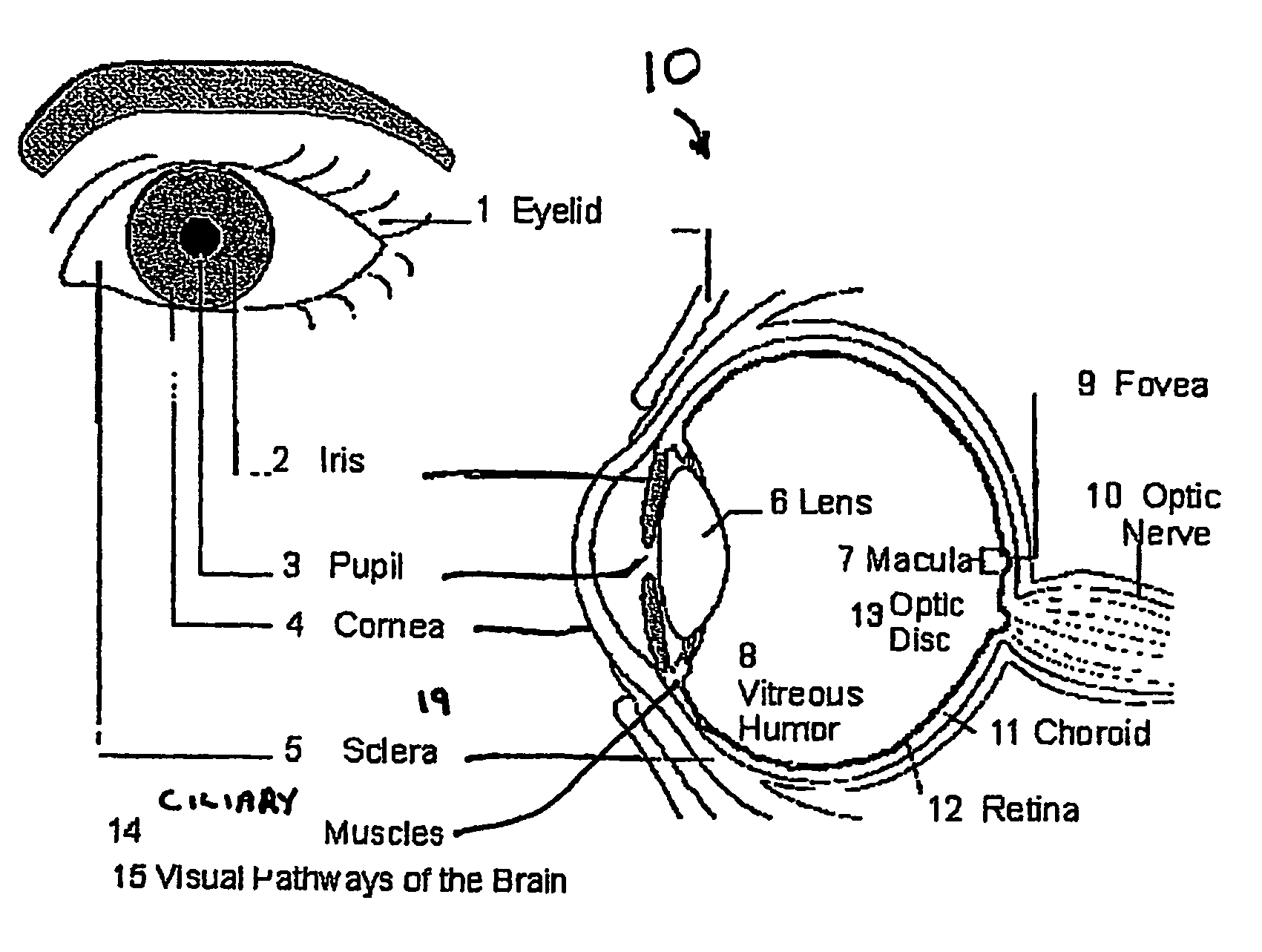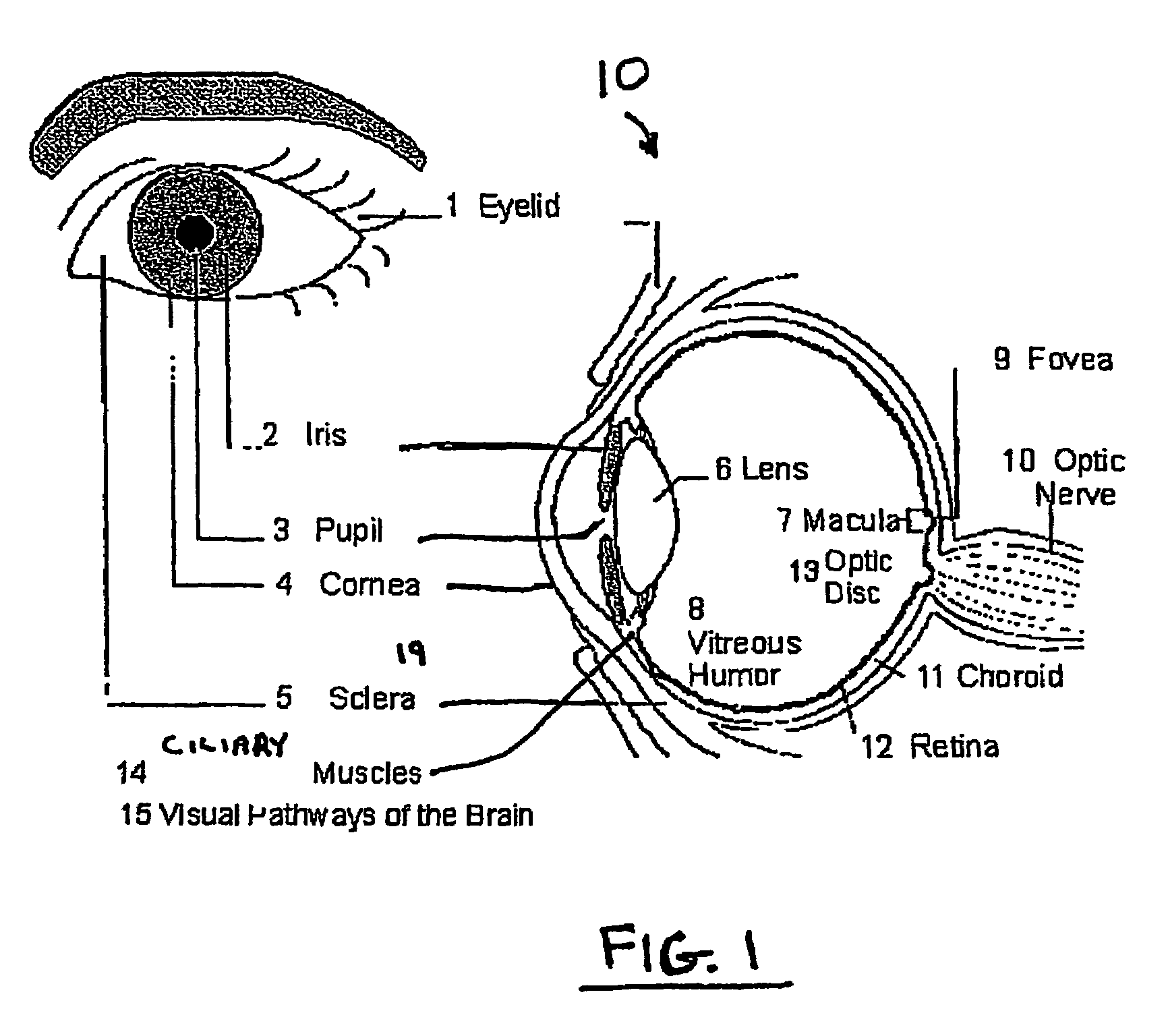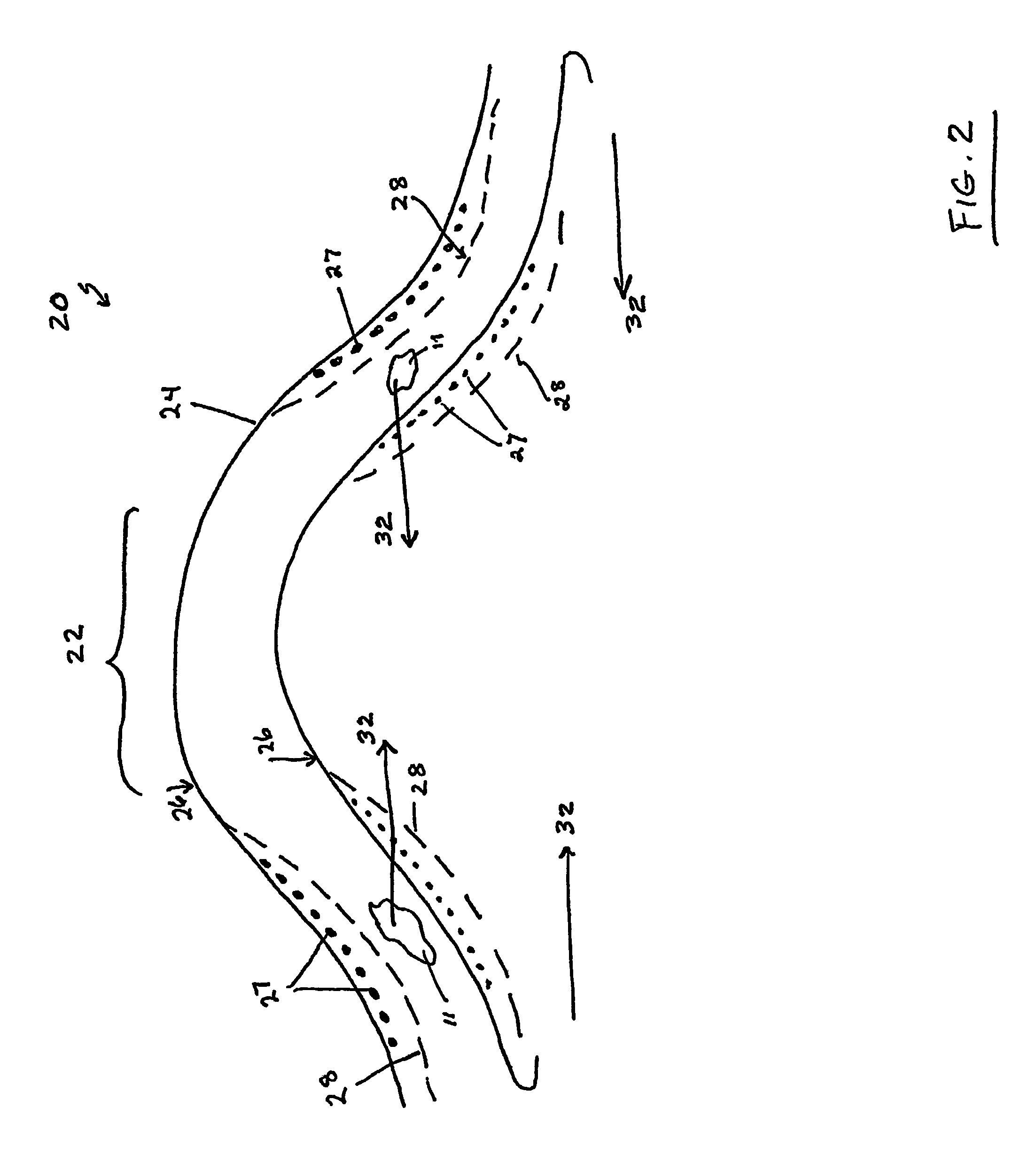Method and apparatus for enhanced corneal accommodation
a corneal and scleral technology, applied in the field of enhanced corneal accommodation, can solve the problems of blurry image, loss of ability to change shape and/or position, and optimized provided, and achieve the effects of enhancing corneal curvature, enhancing corneal flexure, and improving corneal curvatur
- Summary
- Abstract
- Description
- Claims
- Application Information
AI Technical Summary
Benefits of technology
Problems solved by technology
Method used
Image
Examples
Embodiment Construction
[0023]There are numerous reports in the literature of measured changes in the corneal curvature of a subject's eye when an accommodative stimulus is presented to the subject for viewing. The interested reader is referred to Yasuda et al., Changes in corneal curvature in accommodation, J Cataract Refract Surg (2003); 29:1297-1301 and He et al., Change in corneal shape and corneal wave-front aberrations with accommodation, Journal of Vision (2003); 3: 456-463. This knowledge forms the basis for a method and apparatus according to embodiments of the instant invention for addressing the problem of presbyopia via enhanced corneal accommodation. Through selective or predictive biomechanical intervention in the corneal structure, the range of corneal accommodative power can likely be enhanced such that the presbyopic condition can be improved upon or corrected via compensatory / enhanced corneal accommodation. Results reported by He et al., id., advantageously indicate no direct correlation ...
PUM
 Login to View More
Login to View More Abstract
Description
Claims
Application Information
 Login to View More
Login to View More - R&D
- Intellectual Property
- Life Sciences
- Materials
- Tech Scout
- Unparalleled Data Quality
- Higher Quality Content
- 60% Fewer Hallucinations
Browse by: Latest US Patents, China's latest patents, Technical Efficacy Thesaurus, Application Domain, Technology Topic, Popular Technical Reports.
© 2025 PatSnap. All rights reserved.Legal|Privacy policy|Modern Slavery Act Transparency Statement|Sitemap|About US| Contact US: help@patsnap.com



